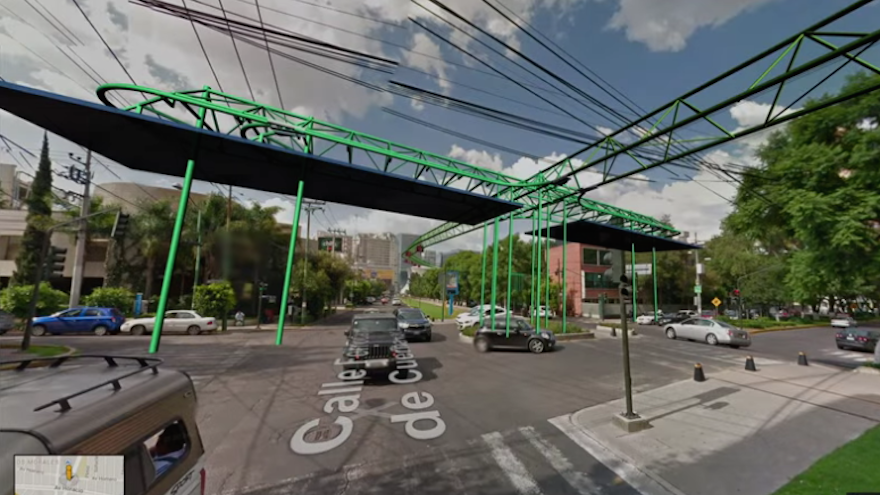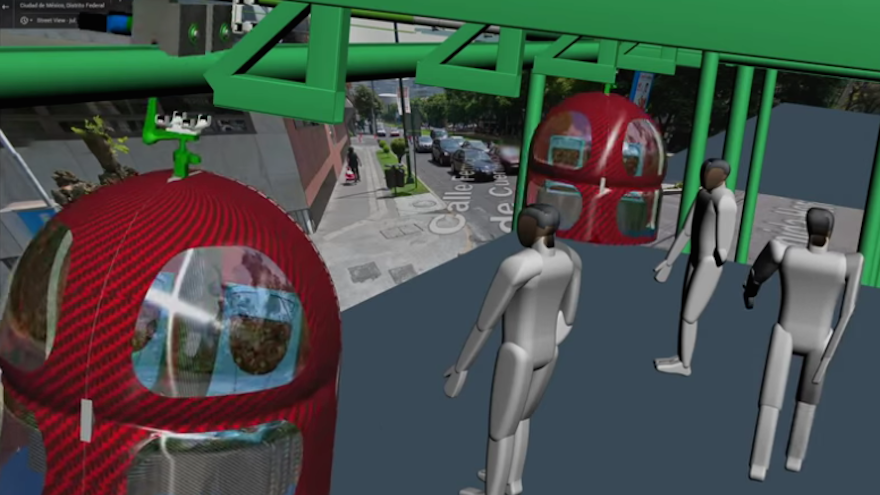Mexico’s traffic congestion has earned it the title of second worst city in the world as city dwellers are faced with a half-hour daily commute. To relieve the everyday congestion on the roads, the city's Ministry of Science, Technology and Innovation (SECITI) has proposed an aerial carriage system to be suspended six metres above the road network below.
The compact two-seater carriages hang from the elevated rail network and look a little bit like the cable cars you would find at ski resorts. The carriages offer a more personalised means of transport where passengers are taken directly to their selected destination without having to stop at every station or disembark in order to connect to another line.
SECITI predicts that a line, 4.8 kilometres in length, could transport 37 million passengers a year, and this could rise to 100 million passengers a year if the line is extended to 16 kilometres. Considering that Mexico’s busiest subway line currently carries 290 million people every year, the elevated monorail would significantly help ease on-the-ground transport systems in the city.
Besides being ten times cheaper than a similar-sized subway tunnel to construct and maintain, the aerial carriage system is also a more ecological form of infrastructure. No trees need to be removed to make way for the structure, which operates on a special gravitational lifting system that requires low-energy consumption.











